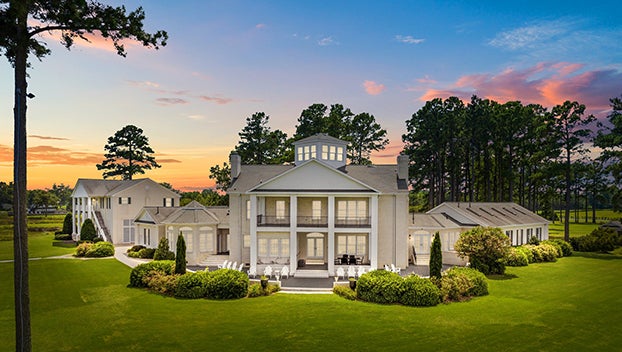Washington hosts free workshop on historic district guidelines
Published 8:44 pm Thursday, February 1, 2018

- DON’T KNOW MUCH ABOUT HISTORY: Washington Historic Preservation Commission is hosting a workshop Feb. 17 to educate people about historic commission guidelines. The workshop is free and open to the public. (Vail Stewart Rumley/Daily News)
Living in a historic home in a historic district is a dream for many: hardwood floors burnished with age; plaster medallions handmade by artisans; chair rails and wainscoting — the list goes on.
But with age comes the need to do a bit of upkeep, and when one’s embarking on a rehabilitation of a historic house, simple repairs may not be as simple as thought. That’s one of the reasons why the Washington Historic Preservation Commission is hosting a free workshop about the modern and the historic and when and where the two shall meet.
The workshop will be held from 9 a.m. to 3 p.m. Feb. 17 at the Washington City Council chambers.
“This event that we are doing is open to the public. It is free,” said Emily Rebert, City of Washington’s community development planner. “We really want everyone and anyone to come. That’s why we scheduled it for a Saturday, because people have jobs.”
Rebert said people are welcome to come in whenever they like during the event and leave whenever they choose.
John Wood, a restoration specialist with North Carolina State Historic Preservation Office, and Amber Kidd, the local government coordinator who advises local governments on the operations of historic preservation commissions, will be giving presentations. Specifically, Wood’s presentation is “Understanding the Historic District’s Design Guidelines Using Modern Materials on Old Buildings.”
Rebert said it’s a hot topic — especially when it comes to windows. Some historic homeowners want to replace old, wood windows with new, vinyl windows, citing the newer windows’ energy efficiency.
“A lot of people believe that using modern windows or vinyl windows are more energy efficiently, and it’s just not true,” Rebert said. “If you’re properly maintaining your historic windows and putting storms (windows) on them, they’re equally efficient.”
Rebert said preservation is more than freezing a structure’s moment of construction in time, but about sustainability.
“Historic preservation is the ultimate recycling. You’re going to replace your vinyl window every 15 years. A historic window lasts you 150 years. There’s something called a life-cycle analysis and when you have to repair a wooden window, you can, but when someone says that an item is no repair/no maintenance, when it breaks, you have to junk the whole thing. With a wooden window, if it breaks it’s biodegradable,” Rebert said.
Rebert encouraged people who live in the historic district or hope to buy in the historic to come to the workshop.
“There’s going to be presentations from John and Amber, but I’d like for it to be, in essence, a table discussion. If someone has a question, definitely raise their hand and ask the question,” Rebert said.
In buying a home in a historic district, preparation is the key.
“I think people really aren’t expecting, really aren’t prepared, for what it involves,” Rebert said. “It takes patience. Historic preservation takes a lot of patience, but you also get a lot of pride in the end of it.”





